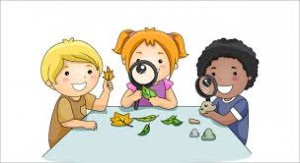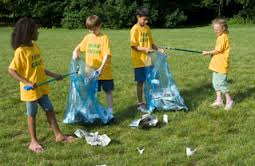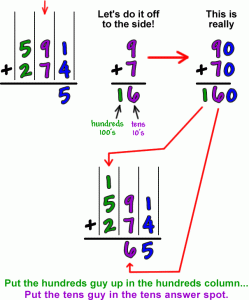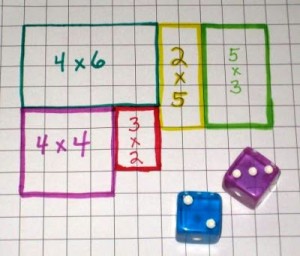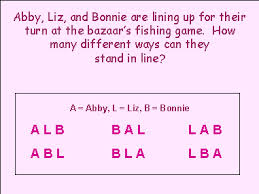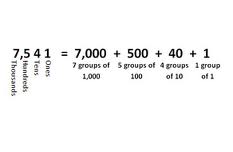Chapter 11- Understand Geometric Figures and Spatial Reasoning
Summary
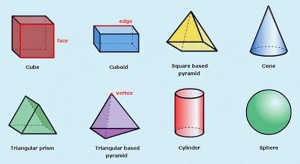
click to enlarge
11-1 Three-Dimensional Figures: I can identify three dimensional geometric figures.
Vocabulary: Three-dimension figure: a solid figure with length, width, and height. Sphere: a solid figure that has the shape of a round ball. Pyramid: a solid figure with a square base and triangular shaped faces. Cube: a 3-dimensional figure in which every face is a square and every edge has the same length. Rectangular prism: a 3-dimensional figure with faces that are rectangles. Cone: a 3-dimensional figure that narrows to a point from a circular base. Cylinder: a solid figure shaped like a can.
11-2 Faces, Edges, and Vertices: I can describe the faces, edges, and vertices of three-dimensional figures.
Vocabulary: Face: the flat part of a 3 dimensional figure. Edge: the line where two sides or faces meet. Vertex (vertices): a point on a 2- or 3-dimensional figure where two or more edges meet together.
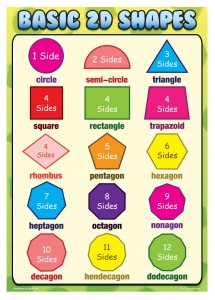
click to enlarge
11-3 Two-Dimensional Figures: I can identify two-dimensional geometric figures.
Vocabulary: Two-dimension figure: a plane figure with only length and width. Parallelogram: a figure that has four sides. Each pair of opposite sides are equal and parallel. Hexagon: a figure that has six sides. Trapezoid: a four-sided figure with only two opposite sides the same length.
11-4 PSS: Look for a Pattern: I can use look for a pattern as a strategy to solve problems.
11-5 Sides and Vertices: I can describe two dimensional figures using sides and vertices.
Vocabulary: Side: one of the line segments that make up a figure.
11-6 Compare Figures: I can compare two-dimensional figures and three-dimensional figures.
11-7 Make New Figures: I can put figures together to form new figures and take figures apart to make new figures.
11-8 PSS: Choose a Strategy: I can choose the best strategy to solve problems.
11-9 Locate Point on a Number Line: I can use whole numbers to locate and name points on a number line.

click to enlarge
11-10 Coordinate Graphs: I can use a coordinate graph to locate objects.
Vocabulary: Coordinate graph: a graph with points to show data.


